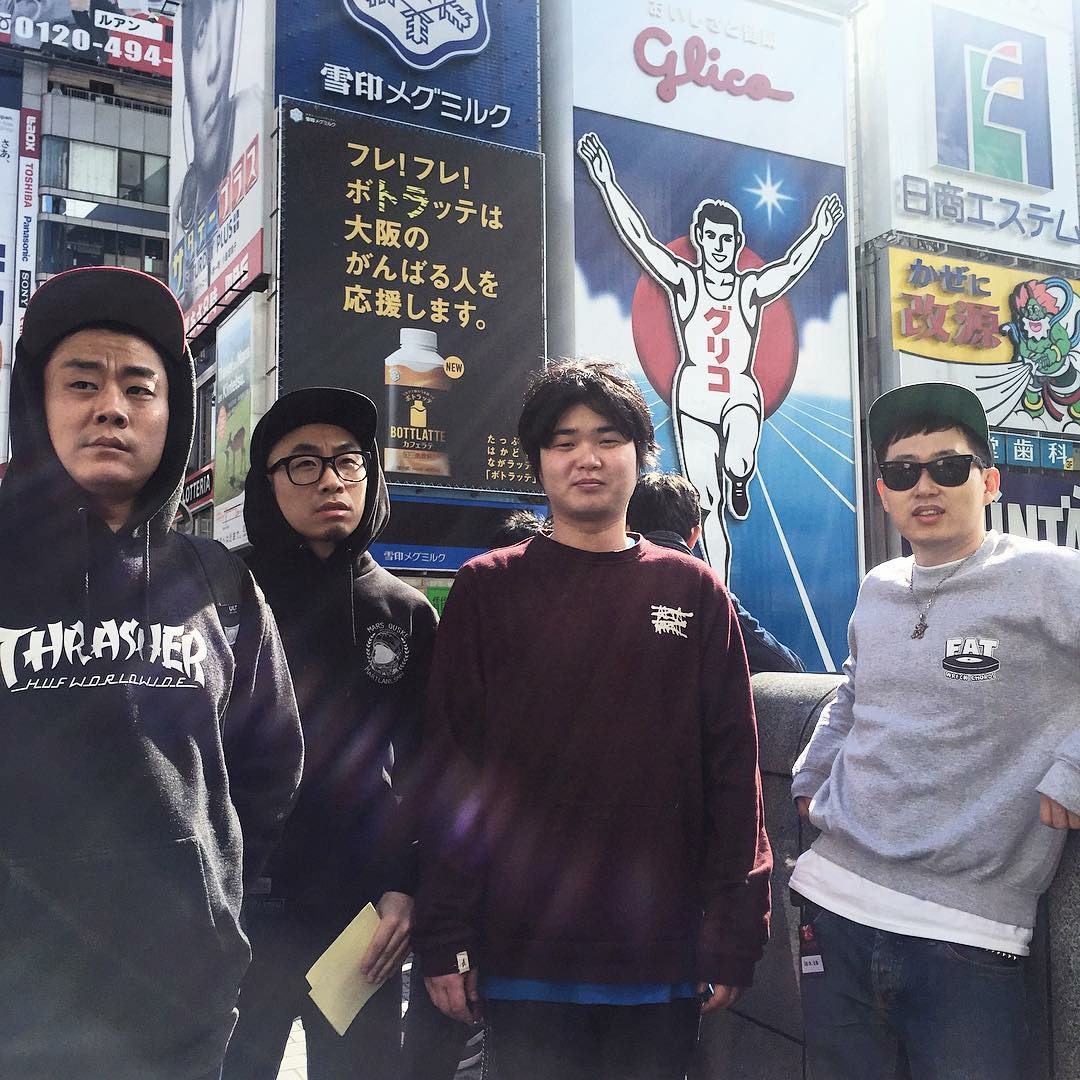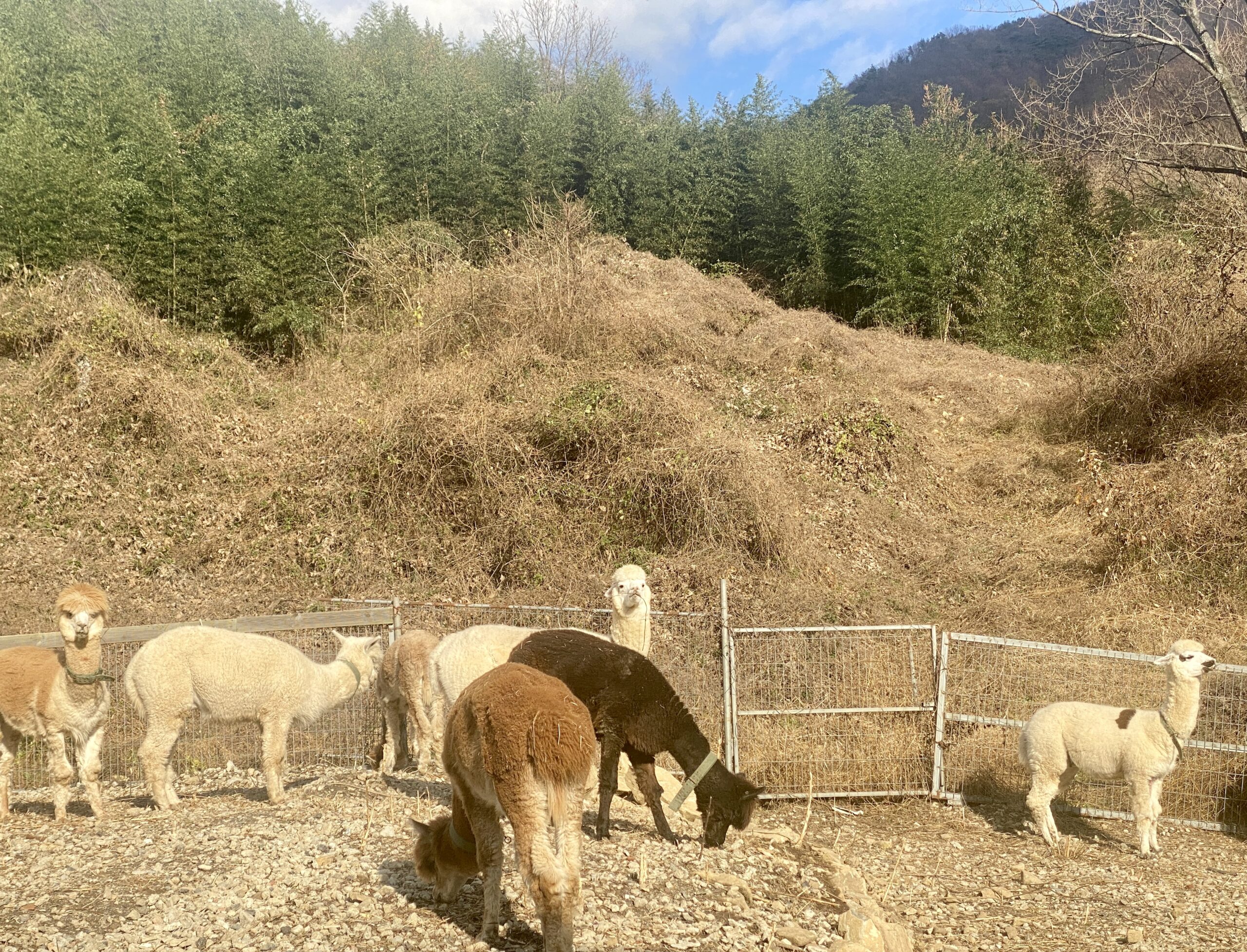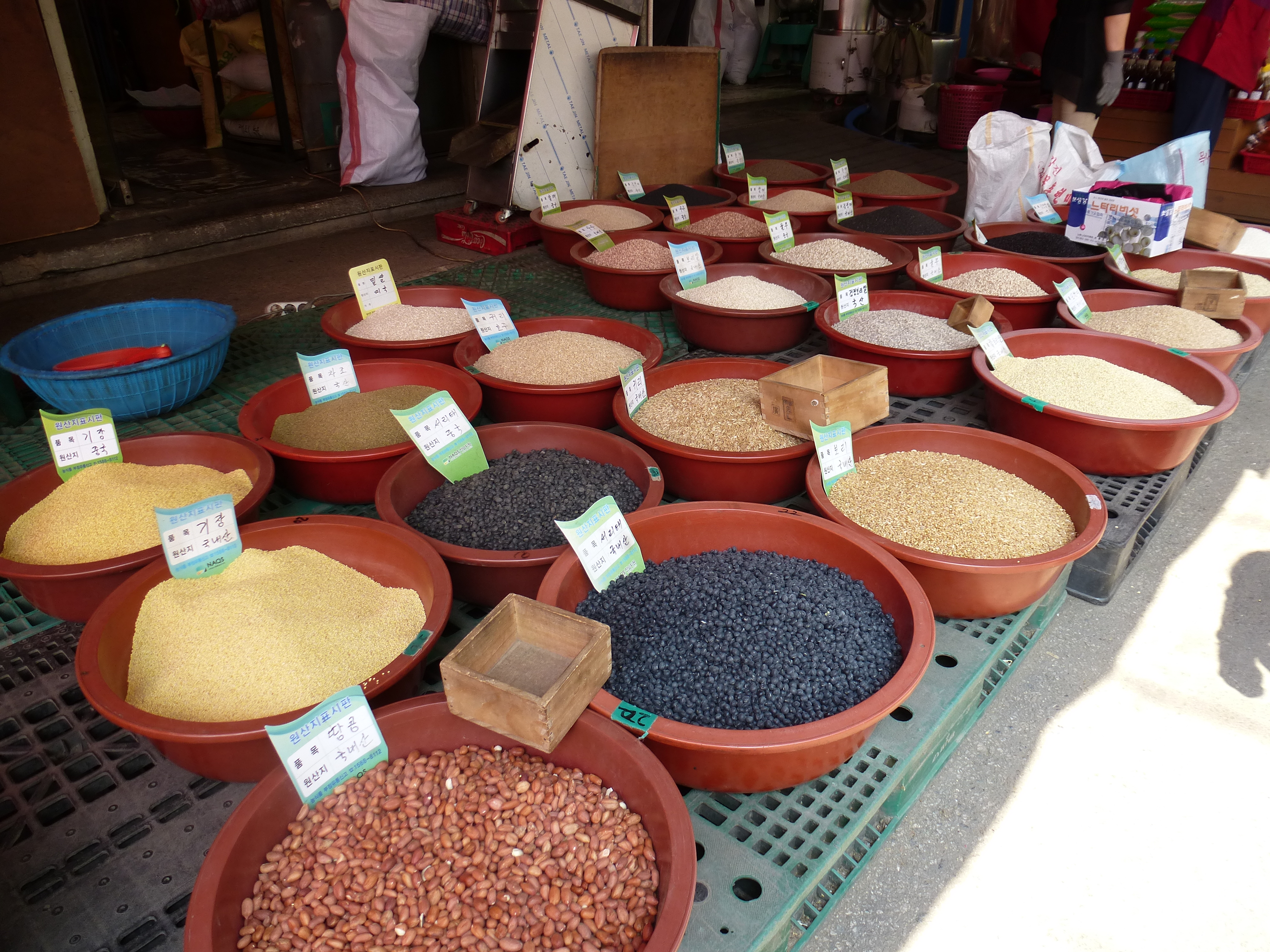To Market, To Market …
Written by Douglas Baumwoll
Photographed by Douglas Baumwoll and Park Tae-sang
Interpretation by Park Tae-sang and Heo Suk-young
About 100 years ago, A. A. Milne, of Winnie-the-Pooh fame, penned the following lines:
I had a penny,
A bright new penny,
I took my penny
To the market square.
To Market, to Market, to Buy a…
Open air markets, street markets, market squares, floating markets, farmers’ markets – markets of one sort or another have comprised an integral part of both rural and urban communities dating back 4,000 years to Assyria and Babylonia in Mesopotamia. The first usage of the word in English, markete (from the Latin, mercatus), occurs in 963 AD; in 1086, fifty official markets are listed in a guide published in England. In my home country of America, my town’s farmers’ market has opened on every Wednesday for over 50 years. So, here in Gwangju, what’s the deal, exactly, with the many street markets you’ve no doubt seen through a car or bus window, or walked by on your way to somewhere else?
Well, according to the Public Economy Division at Gwangju City Hall, there are 24 street markets in our fair city. These markets vary in size, economic health and vitality, and services offered. All in all, however, there are about 3,540 market stalls peopled by about 5,700 vendors. These markets are overseen by the Public Economy Division, as well as the Small and Medium Business Administration, and the individual district offices (e.g., Buk-gu District Office). These government agencies administer their funds primarily to modernize facilities, improve parking, promote shopping among citizens and tourists, work with merchant unions, and advertise. While researching this article, I had the pleasure and the pain (you’ll see what I mean with Seobang Market, below) of visiting three of the more well-known markets in the city: Daein Market, Malbau Market, and Seobang Market.

Daein Market
You may have heard talk of the Daein Market, located downtown, in regard to its weekend Night Market. But Daein is a daily market, serving the local residents, and has been officially registered as such since 1976. Like all of the markets I visited to write this article, city folk have been gathering there to sell wares, foods, clothing (and just about everything else you would need to live a comfortable life) for much longer. No one there could say exactly how long, but guesses were similar to the founding year of Songjeong Market: 1913. The majority of the vendors we spoke with had been selling at Daein for between 25 and 40 years.
We enter on a Saturday at about 2 p.m. The first shop we stop by is, for lack of a better term in English, a “roots” store. Run by Mrs. Cha, a lovely, friendly, and open woman in her mid-60s (I’m guessing here, I didn’t think it very civil to ask her outright), dozens of roots, tree barks, and dried twigs used to make teas connected with Chinese medicine are on offer. “I use some of them,” she says, “others not.” Most are boiled for 30 minutes in water and then drunk for specific purposes. Her products come chiefly from Geumsan, near Daejeon, which is known for high-quality ginseng root. “In the old days,” she tells us, “my husband used to gather the roots himself.” But these days, she buys her inventory from a vendor there, paying cash up front. There are no lines of credit in her business. And thus, we have touched on the economic theme that drove me to write this article; we will revisit it throughout, and I hope you find it as compelling as I do.
“This is my fourth location in Daein Market in 25 years,” says Mrs. Cha. Most recently, she had to move stalls about two years ago, when her landlord raised the rent due to the Night Market’s success. And here is another interesting facet to this story: the street markets in Gwangju are all privately owned by multiple landlords within each one. A true tribute to capitalism, where I had assumed the markets fit into some kind of socialist framework. City-wide, roughly two-thirds of the market stalls are tenant-run, the vendors paying rent directly to the landlord. The other one-third of the stalls are operated by their owners. Here at Daein, the market director confirmed that of the 360 stalls, which provide jobs for about 800 people, 70 percent of them are rented by the sellers from the stall owner.
After about 15 minutes of chatting, Mrs. Cha reminisces a bit and tells us that she remembers living with her husband and her three children 30 years ago in a one-room apartment nearby Daein Market. Back then, she sold her goods from a street cart she wheeled around here, just as her husband did at Malbau Market a few kilometers north. I ask, “What kind of hours do you work now?” She calmly responds, “I usually work from about 8 a.m. to 7 p.m.” I ask, “How many customers have you had today?” She answers, “I have about 10 paying customers every day. Most are long-standing customers in their 60s or older.” Her dried stock lasts one year or more, and customers tend to buy two to ten bundles at a time, spending between 10,000 and 60,000 won. “I do have a few customers in their 20s and 30s,” she adds.
We stand in comfortable silence for a few moments, and I glance down the main street in the market. For a Saturday at 2 p.m., there is what seems to me a noticeable lack of foot traffic for the center of a city. “Is this the normal amount of shoppers for a Saturday?” She says that there is major construction just behind the market, and that many of the long-term customers no longer live there, having moved out to make room for the high-rise apartment buildings that are going up. Gingerly, and judiciously, I ask, “Are you able to cover your costs? I mean, the cost of your product and your rent? Do you more than break even?” She graciously obliges us an answer: yes, she makes a profit, and has, it would seem, for the last 25 years.

We take our leave, and visit with the man across the street, Mr. Kim (see photos). He is a very smiley, friendly, elder man, who has lived here (above his shop) selling backpacks, luggage, hats, and clothing items for 40 years. He is one of the minority owner-operators. “Where are your products made?” He buys products made in China and Korea at various locations in Korea. “When the new apartments are finished, do you think more people will be shopping here?” Mr. Kim, along with the other sellers in the market, expects an increase in foot traffic and shoppers when the new high-rise apartments are finished.
Next, we speak with the head of the Merchants’ Association. He tells us that before the Night Market began in 2008, Daein was 30 percent unoccupied. I have to ask, “So, I was wondering, with the success of the Night Market, and the coming of the new apartments, is there any kind of rent control in effect here? What’s to stop rents from skyrocketing?” He smiles, knowingly, and says, “Nothing is.” He tells us in earnest that he expects an increase in the number of market customers in the next five years, but that rent increases are a concern for him as pertains to protecting the current vendors. He is not sure about enforcement of any national law regarding rent control, but he has initiated informal agreements among Daein landlords regarding a controlled rent-increase policy. Unfortunately, he acknowledges, they are under no obligation to abide by them. According to City Hall, 48 percent of sellers city-wide pay up to 250,000 won in monthly rent; 39 percent pay between 250- and 500,000 won.
Of the three markets we visited to write this story, Daein Market as a whole fits into some middle category as far as economic health and future viability. Although some parts are unoccupied, the Night Market has been very successful. Definitely check it out for a plethora of different foods and restaurant experiences. In addition, on Saturday nights there is live music at the “main stage” as well as the “Dreamers” stall, run by Gwangju-native Tae-sang Park. The Night Market, however, doesn’t really benefit folks like Mrs. Cha or the other day sellers. For them, future rent increases and competition from the nearby Lotte Department Store are more on their minds. In contrast to these sentiments at Daein Market, the prospects at our next stop, Malbau Market, look markedly more optimistic.

Bustling Malbau Market
On Saturday morning, June 17, I went to Malbau Market along with my interpreter. Because the date ends in a “7,” this qualifies as a “big” market day at Malbau. Each market has a different day, but on these official market days there is a bigger turnout, presumably of both vendors and shoppers. Located between Homeplus to the north, Dongkang College to the south, and Chonnam University to the west, Malbau is a huge, thriving street market, involving 511 official stalls and thousands of corollary small businesses (see photo, previous page). Colorful umbrellas line the main streets, keeping the scorching sun off the backs of the sidewalk sellers hawking mostly fruits and vegetables. Foot traffic is lethargic: the sidewalk is clogged with shoppers of all ages, including families with children. On a busy day, 20,000 shoppers pad past the stalls eyeing and buying the multitude of items on display.
We turn off the main street and chat with a grain seller who has had her stall for 15 years. She sells dried grains and legumes from all over the world. I buy a doe (되; a wooden box used to measure grains) of white beans from Canada. She sells many grains from Korea, which she buys directly from farmers, as well as lentils and chickpeas from America and other beans from China. We wind our way past all the essentials available to the citizenry, such as vegetables, meats, clothes, hardware, prepared foods, live seafood, and even Jindo puppies. We arrive at the central business office for Malbau, on the first floor of a large parking structure.
The market director, Mr. Jeong, welcomes us heartily (we are walk-ins here) and ushers us into a meeting room and graciously speaks with us for 30 minutes. We cover many of the same topics as relayed above regarding Daein Market: ownership and tenancy of stalls, health of the market, future prospects. First, however, I ask him about the sidewalk sellers. “How much do they pay the market to have a place on the sidewalk? Or do they pay the city directly?” He hesitates a split second, and tells us that the sidewalk vendors are not associated with the market officially in any way. They simply claim a space in the morning and set up their wares, selling directly to the public. By custom, the same sellers claim the same space daily. The police occasionally shoo them on their way, but this occurs rarely. Technically, the federal government has some kind of jurisdiction over this practice, but if you have ever gone by Malbau Market on any day of the week, there are dozens of sidewalk sellers mongering their merchandise, primarily fruits and vegetables. Though I could not confirm this, I have heard that typically these vendors do not deal directly with farmers, but rather buy their products from the large wholesale market a couple of kilometers north and simply resell them on the sidewalk. This is obviously true for imported fruits such as bananas. We did speak with one such seller, however, selling locally harvested garlic. She told us that after selling it at the market, she paid the farmer their portion. I asked Mr. Jeong, off the record, about both the traffic problems caused by these sellers taking up one lane of the three-lane road there and whether inside-the-market sellers bear hostility toward the sidewalk sellers who pay no rent or permit fees. He was honest enough to provide us a short answer, which obviously I cannot share with you!
Malbau Market is thriving. Mr. Jeong estimates that daily sales can end up in the 500,000–2,000,000 won/day range for each stall. Thousands of other shops in the immediate vicinity also benefit from the throngs passing by.
A Bright Future for Malbau
At the center of the market is a large, open, paved space owned by a driving school. The city is currently trying to purchase this land, and Malbau will have the right to use it. This asphalt expanse will be transformed into a green space to be used as a park and a performance venue. Mr. Jeong hopes that younger people will attend performances and events there. Furthermore, Malbau Market is actively being promoted to tourists and to citizens. In addition, there is a major urban development project underway just west of Dongkang College and south of the market, which will bring thousands of new residents to the neighborhood. Finally, in the distant future, the new subway line, Line 2, slated for construction in Gwangju will have stops at Seobang Market to the south and Chonnam University to the west. All in all, Mr. Jeong is optimistic about the future health of the market. “What is the one aspect of working here you like most?” I ask. “The diversity of the sellers and shoppers.” I extend the question: “And the part you like least?” He chuckles and says, “The maintenance of the physical facility,” which will include improvements to the parking structure and its access from the main road.

Seobang Market
After learning of the success of Malbau Market and experiencing the vitality and energy there on a market Saturday at 11 a.m., my interpreter comrade and I walked 10 minutes south to Seobang Market. This market is near my house, and I was curious to look into its existence a bit more deeply, knowing that it represents the other side of the coin when it comes to street market vitality in Gwangju.
Seobang Market has real-name recognition among the older generation in Gwangju. It enjoyed city-wide fame in the 1970s and 1980s. Today, however, is a much different story. Of the store fronts there, numbering perhaps 100 or so, maybe 10 percent were open. Apart from eight or ten stalls at the main entrance, the market is essentially defunct. The number of alleys and storefronts attest to its past success, but today Seobang Market infuses the passerby with the vibe of entrepreneurial death. There is not even an administrative office here – its day-to-day activity is overseen by just one government worker in the Buk-gu District Office. Perhaps the future apartment buildings and subway stop will reinvigorate this community trading post, but I judge it just as likely that the owners will sell to developers, take their money, and move on.
Closing Thoughts
I am a community guy. I love it when people come together during mundane daily activities, interacting with their neighbors and their fellow town- or city-dwellers. Markets, in all their varieties, have offered people, especially in the middle and lower classes, a place to do just that for thousands of years in virtually every country and culture on the planet. Practically speaking, prices are fair and buyers support sellers directly, even if there are a few middlemen between the seller and the producer.
Back when I lived in Spain in the late 1990s, I watched the street markets dwindle as supermarkets popped up all over my neighborhood. Longer opening hours, one-stop shopping, and better access to parking all contributed to the popularity of those supermarkets over the neighborhood street markets. Do a search and you will quickly find lots of articles about the death of street markets worldwide. You can find statistics, for example, showing the increase in the percentage of vegetables bought in supermarkets rather than street markets. Here in Gwangju, City Hall acknowledges that decaying facilities, lack of parking, and competition from large supermarkets are a threat to the survival of our street markets. I do my weekend vegetable shopping and basic housewares shopping at Malbau Market. I encourage you to do to the same. Will the markets and their vendors adapt to the consumers’ needs and desires? Will the shoppers sacrifice a modicum of convenience in order to maintain a community tradition and stabilizer that has existed in Gwangju for decades? As always, only time will tell.
The Author
Douglas Baumwoll has been a professional editor and writer for 25 years. He has worked as a lead writer, chief editor, and writing trainer at an international environmental consulting firm. In Korea, he has taught university writing courses and currently trains public school teachers. His personal writing interests include climate change, social justice, and fiction.
———————————————–
Park Tae-sang is the founder of “Dreamers,” an open space mix of live music, good food, drinks, art, a friendly and intimate space in Daein Market.
———————————————–
Heo Suk-young is currently an intern at the Gwangju International Center. He majors in psychology in Chonnam National University.





